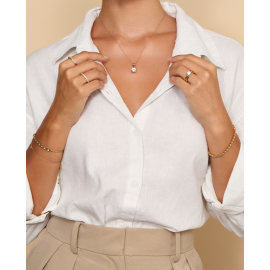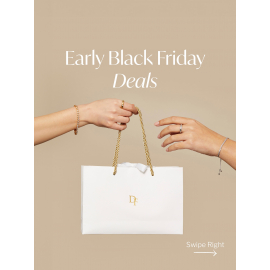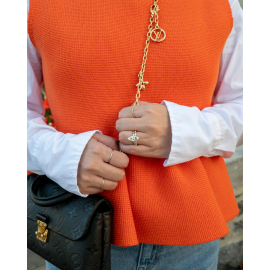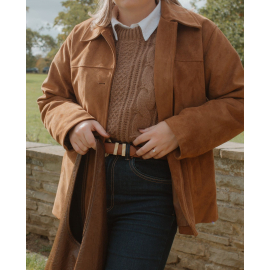Price match guarantee

We’ve teamed up with Klarna to provide flexible payment options, allowing you to shop the way you want. With Klarna, you can split your payment into 3 instalments or choose to pay later, making your shopping experience smoother and more convenient. Your order total must be between £100 and £499 to qualify.

We’ve teamed up with Klarna to provide flexible payment options, allowing you to shop the way you want. With Klarna, you can split your payment into 3 instalments or choose to pay later, making your shopping experience smoother and more convenient. Your order total must be between £100 and £499 to qualify.

May 22, 2020 | by Admin
It is law within the UK that every item of precious metal sold such as Platinum, Gold, Silver is stamped labelling the item with the type of metal it is. Platinum pieces which weigh less than 0.5 grams, 18ct Gold and Palladium pieces weighing less than 1.0 gram and Silver pieces weighing less than 7.78 grams are except from hallmark.
At Diamonds Factory all our products are hallmarked as per UK hallmarking law from London Assay Office (The GoldSmith Company)
The Goldsmiths' Company Assay Office is the oldest assay office in the United Kingdom. It has provided hallmarking services since The Goldsmiths' Company was founded in the 1300s. The company received its royal charter in 1327 and ranks 5th in order of precedence of the 12 Great Livery Companies of the City of London.
Hallmarking dates back to the 1300s when Edward I of England passed a law requiring any item made of silver, which was offered for sale, to be at least of equal quality as that of the coin of the realm (silver currency). The wardens of The Goldsmiths' Company were tasked with visiting workshops in the City of London to assay (test) silver articles. If these articles were found to be below standard they were originally destroyed and the metal forfeited to the King. If they passed, each article received the King's mark of authentication - the mark of a leopard's head. By 1478, there were several hundred workshops and merchants manufacturing silver articles in the City of London. It was not possible for the wardens to visit them all so the merchants were ordered to bring their items to Goldsmiths' Hall for testing and marking and a permanent Assay Office was established in the building. This is the origin of the term hallmark - struck with the King's mark at Goldsmiths' Hall.
In 1544 the Goldsmith's Company adopted the King's mark as their town mark and the mark of the leopard's head is now internationally recognised as the mark of this assay office.
The Goldsmiths's Company Assay Office is still based at Goldsmiths's Hall and remains the oldest company in Britain to be continually trading from the same site. However, it also has two satellite offices; at Greville Street in Hatton Garden in the heart of the London jewellery quarter and within a high security complex near London's Heathrow airport. It now has a new off-site facility within the Dalston-based jewellery manufacturer, Allied Gold. This is the first time in the Assay Office's 700 year history that it has opened permanent hallmarking services on a customer's premises.
In addition to hallmarking, the office has now expanded its range of services to support the jewellery trade and enforcement authorities. It offers a variety of specialist analytical services including nickel, lead & cadmium testing, antique silver dating, non-destructive compositional analysis, plating thickness measurement and a melt and assay service for scrap precious metal carried out in their fully independent on-site laboratory. Other services offered are a jewellery valuation service, laser marking, trading standards assistance, high quality photography and a comprehensive range of training and educational seminars, lectures and specialist events.






If you are thinking of asking your loved one to marry you, you are probably wondering how to choose the right engagement ring. With so many beautiful engagement ring styles out there and
many things to consider before placing your order, it can feel tricky to understand where to begin your search.
From setting a budget to considering your significant other’s style, we reveal the steps you should take to choose the right engagement ring for your partner - you can thank us later!
How much should you spend on an engagement ring?
Up to three month’s salary is the traditional amount spent on an engagement ring but, realistically, you should spend what you can afford and what makes sense for your lifestyle. It is thought that the average cost of an engagement ring in the UK is £1,480 but of course, how much you spend is really down to you and depends on the style of ring you are hoping to buy.
How to choose the right engagement ring
1. Set a budget
The best place to start when you begin searching for an engagement ring is to set a budget. Be realistic, but also consider the style of engagement ring your partner may be hoping for. There is no right or wrong answer to how much you should spend on an engagement ring, and there are ways to save so that you can afford the ring you want. Head to our engagement ring calculator to get an idea of how much you can afford to spend according to your salary, monthly finances and the amount of time left until you propose - you may be surprised.
2. Consider their lifestyle
If your loved one is super active or they have hobbies that require working with their hands, such as baking or gardening, you should take this into account. For example, if they are very active or clumsy, you may prefer to stay clear of pavé diamonds or fine prongs to avoid damage or diamond loss. A 6-prong solitaire engagement ring, or a ring in a secure bezel setting, could be the perfect solution for an active or accident-prone partner. If your loved one is less active, or they tend to be careful with their jewellery, you can consider delicate or vintage engagement ring styles.
3. Look at their personal style
You probably know your loved one quite well by now but if you are still unsure what engagement ring they would like it is a good idea to take a look at their style. How do they dress, simple and understated or glamorous and on-trend? Do they tend to wear yellow gold or platinum? Once you have taken note of their style and preferences, you should have a good idea of the perfect engagement ring setting for them whether that be a vintage engagement ring or modern style. Your next step is to customise the ring by choosing your precious metal and the perfect diamond.
4. Choose a metal type
Whether your loved one prefers the elegant finish of white gold, the fashionable appearance of rose gold or the classic beauty of yellow gold, there is no right or wrong answer when it comes to choosing the perfect metal for your engagement ring. This should be a personal choice, although there are some things you may wish to consider such as the strength, weight or finish of each metal type.
White gold & platinum
White gold and platinum are both beautiful, white metals, with a couple of differences. White gold is lighter than platinum and also more affordable whereas platinum is highly durable and a hypoallergenic metal - perfect for those with sensitive skin.
Yellow gold
Yellow gold is a natural metal that has a timeless and classic yellow-toned appearance. It mainly consists of pure gold which is very soft therefore a small number of alloy metals are added, such as zinc and copper, to improve its durability.
Rose gold
Rose gold is a fashionable metal type that has become increasingly popular in recent years. It is made up of a mixture of yellow gold, copper and silver and has a beautiful blush tone.
If you want to find out more, head to our metal guide in our education section.
5. Choose the perfect diamond
Choosing the perfect diamond can have a great impact on the overall appearance of your engagement ring. As the talking point in every ring design, the diamond you select should be the highest quality that you can afford for your budget.
To find the perfect diamond for your budget, you should take some time to learn about the 4 C’s - cut, clarity, carat and colour. These parameters affect the value and overall appearance of the diamond.
Carat
Most people tend to worry about buying the biggest diamond for their budget. Although of course, it does affect the size, carat refers to the weight of the diamond.
Cut
The cut of a diamond refers to its proportions. A diamond with an excellent cut is perfectly proportional, and therefore reflects more light and creates more sparkle. It can also help with making your diamond appear slightly larger.
Clarity
Clarity refers to the assessment of any imperfections either within the diamond or on the outside. Diamonds with the lowest number of flaws and blemishes will have a higher clarity grading.
Colour
All diamonds are assessed and graded on a diamond colour scale. High-quality diamonds have a pure, bright clear appearance, whereas those lower in quality show traces of colour (sometimes a yellow or brownish hue).
Diamond shapes
Not to be confused with cut, the diamond shape you choose affects your entire engagement ring design. The most popular shape is the round diamond, known for its superb sparkle and timeless beauty. It also tends to be the most expensive diamond shape. There are plenty of other shapes to consider and in recent years diamond shapes such as the oval, emerald and pear, have become increasingly popular.
Want to find out more? Head to our diamond education guide to learn everything you need to know about diamonds.
From defining your loved one’s personality and choosing a metal type, to selecting the perfect diamond, you should now be confident enough to choose the right engagement ring.
Browse our selection of engagement rings online or head to our other article - 20 unique proposal ideas that wow!